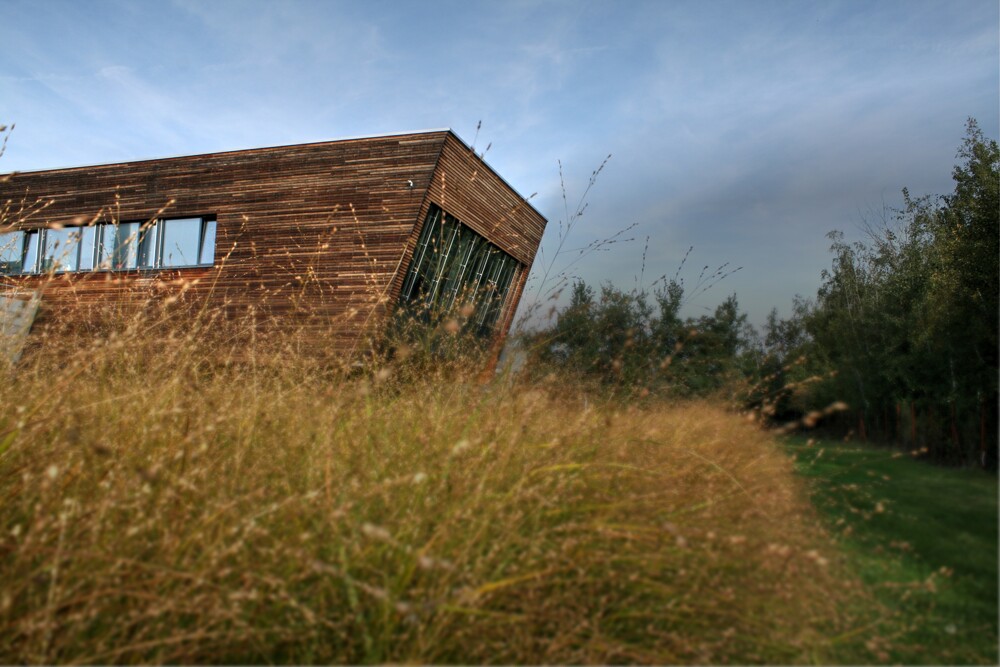

The energy system that UCEEB developed in cooperation with REGULUS can ensure up to 80% coverage of energy from renewable sources for heating and hot water preparation in a family house.
The technology is based on the combination of a newly developed heat pump in conjunction with a low-cost seasonal storage tank and a photovoltaic system. Its main advantage is that it uses the summer surplus of electricity from the photovoltaic system to charge the reservoir in the basement of the house with completely renewable energy, and in the winter the stored heat is pumped and used to heat the house.
We have developed the following main elements: a ground-water heat pump with speed control and superheated steam cooler, a combined stratification water heat storage tank and a low-cost ground storage tank in the building foundation. These individual parts were first tested separately and subsequently implemented into the energy system of the experimental family house. A family house in Hamrech u Hlinska with a total living area of 290 m² was chosen for the simulation and implementation of the demonstration device.
Since the spring of this year, the energy system has been working according to operational requirements, with the ground storage tank being gradually charged. It is also continuously monitored from the energy flows in the system to the charging of the ground reservoir and its behavior corresponds to the design assumptions.
According to our experts, this makes it possible to reduce the consumption of non-renewable primary energy below 20 kWh/m² per year. This is a third of the requirement compared to the requirement for passive houses and is the way to truly almost zero buildings, as is the goal of energy-saving construction after 2020. The payback period, compared to others using a combination of heat pump and photovoltaic system, is at the level of nine years.